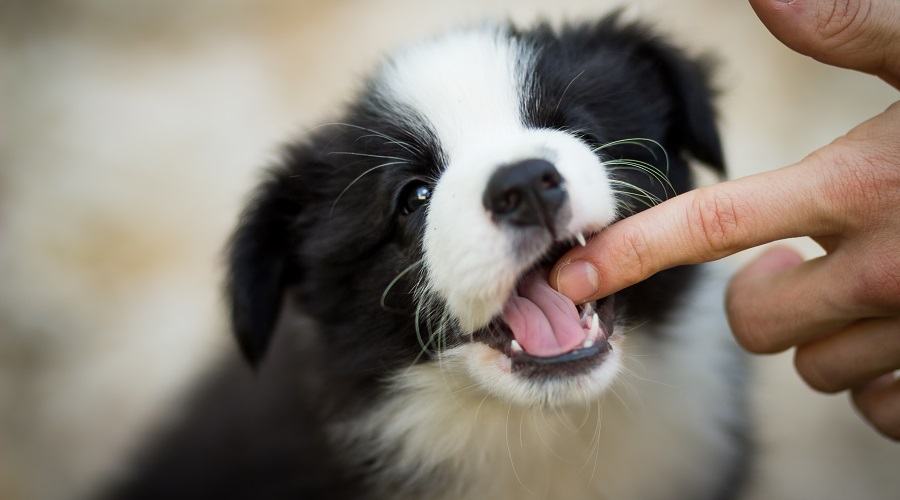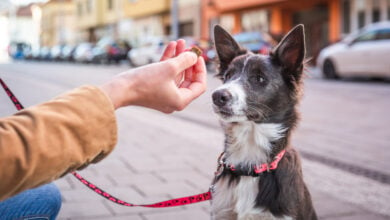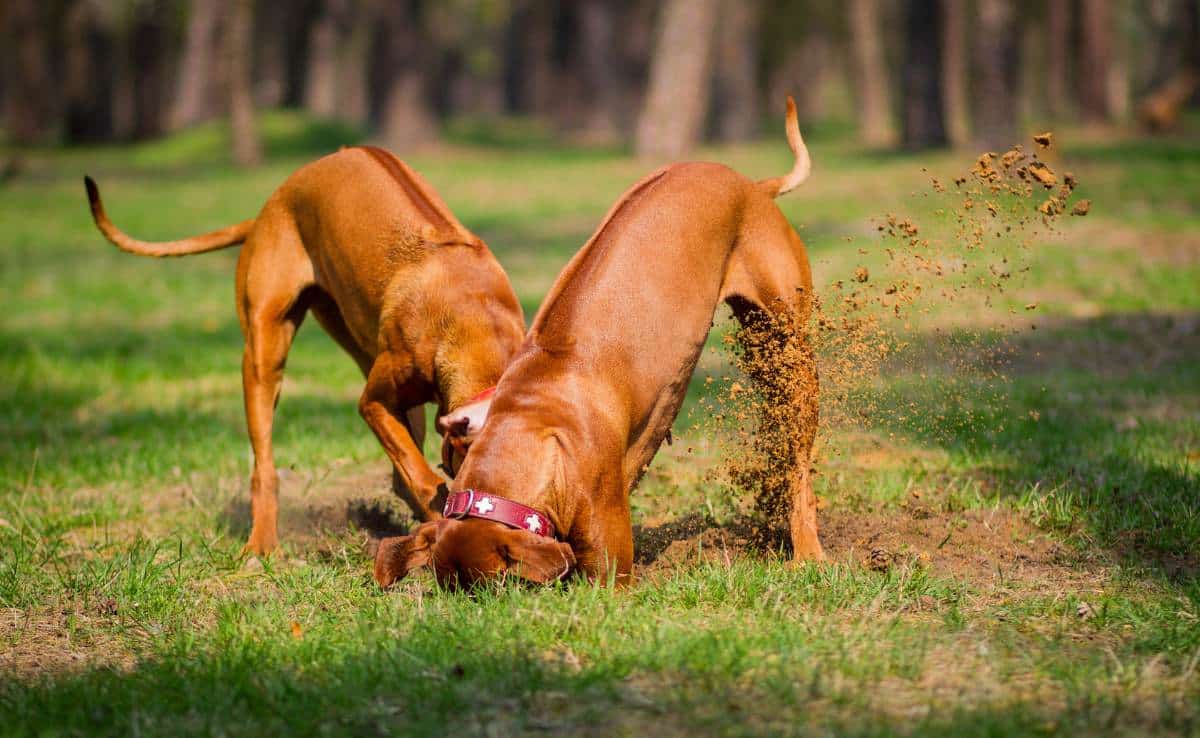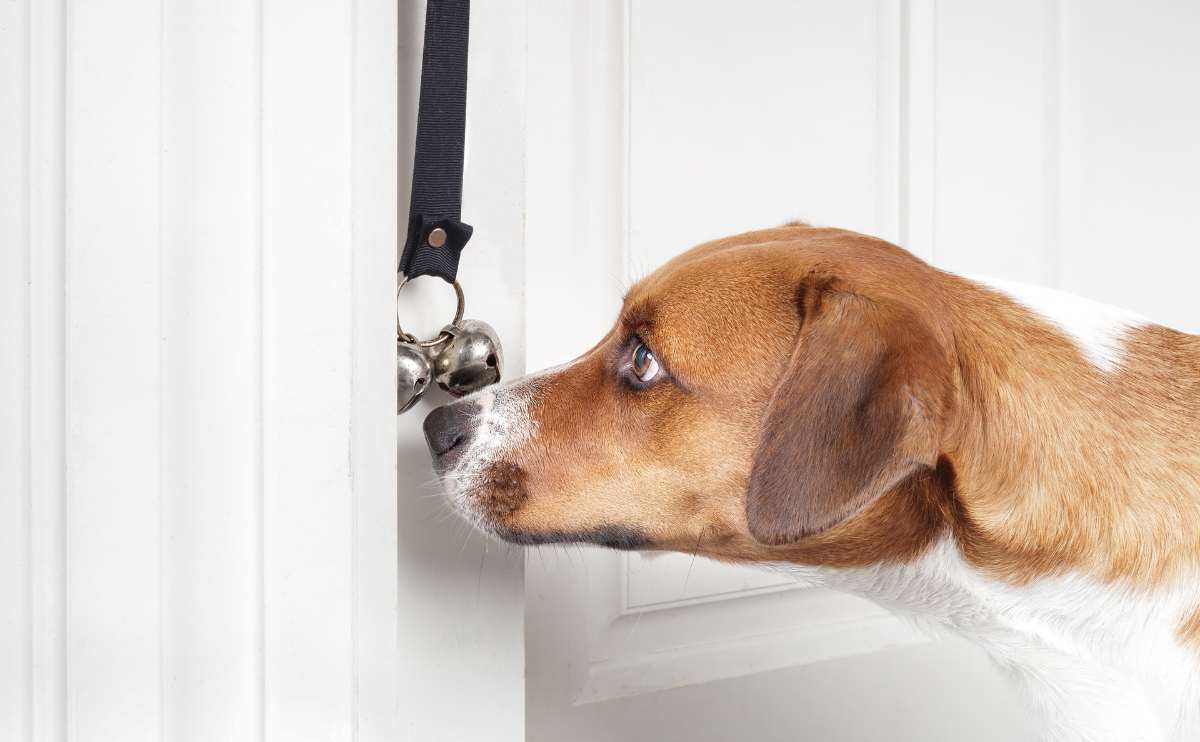How to Teach a Dog to Come Without Begging, Bribing, or Crying in Public
When you purchase through links on our site, we may earn a commission. Here’s how it works.
Yelled “Come!”, but got a tail flick and a disappearing butt instead? You’re not alone.
Table of Contents
Here’s how to teach a dog to come every time without begging, bribing, or losing your voice in public. It’s fast, fun, and works even if your dog has “selective hearing.” Let’s fix it.
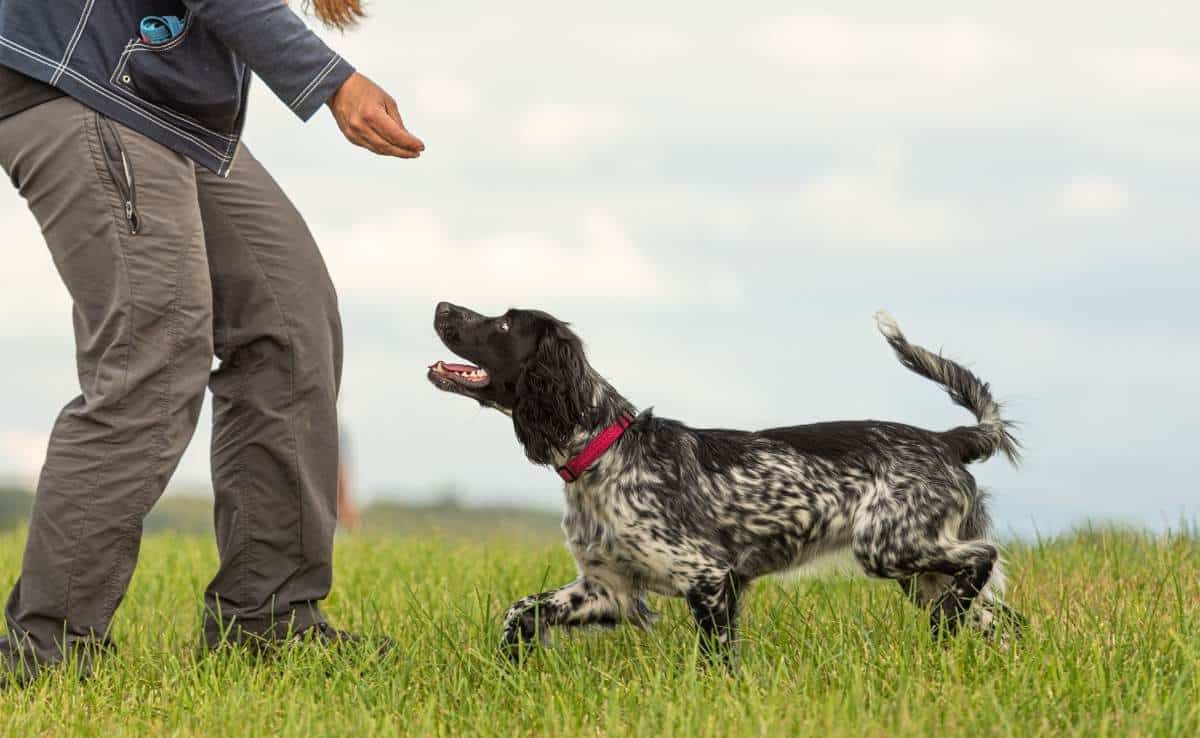
Why Your Dog Doesn’t Come When Called (Yet)
If your dog hears “Come!” and responds with “Nah, I’m Good,” it’s not disobedience, it’s dog logic. Here’s what’s really going on inside that fluffy little rebel:
5 Surprisingly Common Reasons Your Dog Ignores You
- You’ve Trained “Come” to Mean “Fun Is Over.” If every recall ends in a bath, crate, or leash, your dog’s thinking: Hard pass.
- You’re Background Noise. Dogs tune out words they hear too often with no payoff. You might as well be the hum of a refrigerator.
- Squirrels > Snacks. If your recall reward is weak, your dog will pick chaos every time. Even your tastiest treat can’t compete with a backyard rave.
- You Repeat the Command (and They Know You Will). “Come. Come! COME!!” = free trial version of obedience. Dogs learn they don’t need to move until you’re desperate.
- They Never Really Learned What “Come” Means. Most dogs hear it, but few understand it as a must-do-now-no-matter-what command.
Quick Fix Takeaway: To fix recall, you need to retrain “Come” to mean: Immediate Reward, Every Time. No punishment, no catch. Just party time when they get it right.
Real Talk: How My Dog Falkor Taught Me to Stop Saying “Come”
When my Poogle Falkor was a puppy, I tried to teach him to come when called. Classic command, right? “Come!” I’d say with my best “serious dog trainer” voice. He’d look at me like I’d just read him the terms and conditions of a software update.
Eventually, after a lot of patience (and a very high-value treat), he came running over once. The lightbulb went off, not for him, for me. He didn’t care about the word “come.” But “treat”? Oh, that was his love language.
So, like any desperate dog parent, I switched strategies. Instead of “come,” I started yelling “TREAT!” across the yard. Suddenly, Falkor was sprinting toward me like a freight train with no brakes.
Fast forward to today: yell “treat,” and he appears out of thin air like a furry magician. Say “come,” and he gives me a blank stare that basically says, “Never heard of her.”
– Danielle DeGroot, Rescue Dog Parent & Canine Journal Writer
Quick Fix: How to Teach Your Dog to Come in 3 Simple Steps
No long training sessions. No fancy gear. Just you, your dog, and a few snacks. Here’s what you need to teach a dog to come and how to teach your dog to come reliably, even if they currently treat you like an unpaid intern.
| Training Treats | Long Loose Training Leash | Treat Pouch |
|---|---|---|
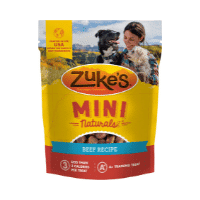 | 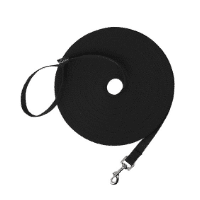 | |
| View On Amazon | View On Amazon | View On Amazon |
1. Make “Come” Sound Like a Party
Say “Come!” in a happy, high-energy voice. Then celebrate like your dog just solved world peace. Use treats, praise, goofy excitement, whatever gets that tail going.
You need to pick your recall verbal cue, like “come” or “here.” You can use any word you choose, but you have to use it consistently when training. You also want to pick a word that you don’t casually use around the house. Your recall cue needs to be distinct.
Why it works: Your dog starts thinking, “Hearing ‘Come’ = good stuff happens fast.”
2. Reward Immediately (Even If It Was Sloppy)
Don’t wait. Don’t hesitate. The moment your dog moves toward you, reward. Even if they took their sweet time. You’re building an association, not grading effort (yet).
Pro tip: Use small, high-value treats like chicken or cheese, not dry biscuits that taste like sadness.
3. Practice Short, Sweet, and Often
Start in boring, low-distraction spots. Do 5–10 reps, then stop while it’s still fun. Don’t wait for your dog to tune out. Quit while they’re crushing it.
Bonus hack: Hide behind furniture and call them. Dogs love turning recall into a game of “find the human.”
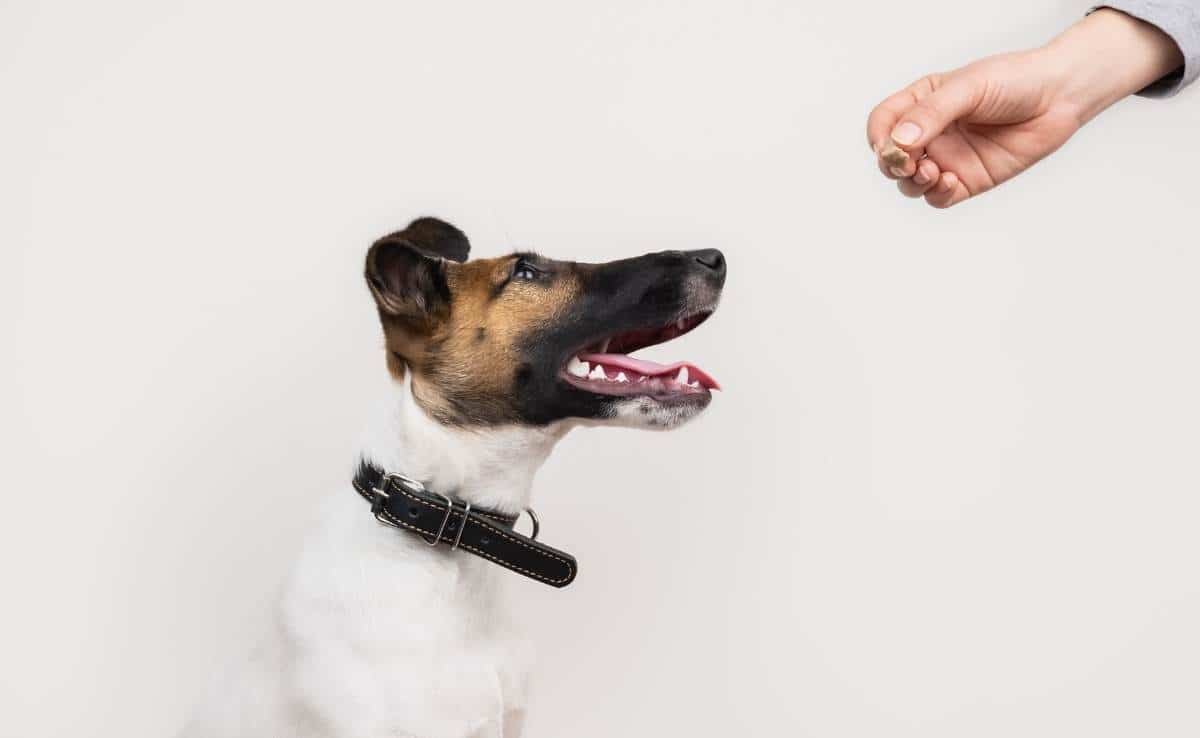
7 Recall Games to Help Teach Your Dog to Come
Dogs learn fastest when it feels like play, not school. These simple recall games are built to boost response speed, focus, and fun.
1. Hide and Seek
Duck behind a door or couch, then call your dog once. When they find you, reward big. This builds excitement and teaches them to come running to your voice.
2. Ping-Pong Pup
Have two people stand across a room or yard. Take turns calling the dog and rewarding them when they reach you. Your dog gets multiple reps with no pressure, and it turns into a game fast.
3. Chase Me (in Reverse)
Call your dog, then jog away from them. Most dogs can’t resist the chase. When they catch up, stop and reward. This flips recall into a pursuit they want to win.
4. Recall Relay
Set up mini “stations” with simple obstacles, such as around a tree, behind a chair, or over a cushion. Call them from one spot to another to keep their brain and bodies guessing.
5. Jackpot Recall
Once a day, give a massive, unexpected reward when they come, like five treats instead of one. This keeps them guessing, “Is this the big win?” and makes recall more exciting.
6. The Look-at-Me Game
Toss a few treats a few feet away from you. As your dog finishes eating, say their name. The moment they turn their head to look at you, reward them with something even better, like chicken or a favorite toy.
This teaches your dog that looking at you = better things happen, a crucial step toward strong recall in the face of distractions.
7. The Long-Line Sprint
Use a 20–30-foot leash (long line), call your dog, and give them the chance to build momentum. Reward heavily when they reach you at speed. This trains a strong, confident recall, especially for dogs hesitant to run all the way back.
The Bottom Line: These games don’t just teach your dog to come; they make it their favorite thing to do.
How to Train a Dog to Come – From Couch to Chaos
Teaching recall inside is one thing. But, outdoors, with squirrels, smells, and wind-blown leaves that might be alive, is a different beast.
Training a dog takes a lot of patience, practice, and consistency. Some dogs master recall training faster than others. Here’s how to move from quiet rooms to real-world distractions without losing your mind (or your dog).
1. Start Indoors (And Nail It)
Before you get into more advanced recall training, you’ll need to make sure your pup understands your verbal cue.
Begin in the most boring room of your house. Short reps, big rewards. In a quiet place in your home, follow these six steps:
- Back up a few steps from your puppy or dog.
- Encourage them to come to you.
- When your pup is on their way to you, say your chosen command.
- Once your dog reaches you, give them a treat and praise (a verbal cue like “good.” Some trainers suggest gently taking or touching their collar and having them sit, so they understand they should stay with you when you call.
- Repeat this process, gradually moving further away from your dog.
- Reinforce this several times during your day, always sending your dog on their way after they get their reward.
Expert Tip: Use everyday situations to reinforce your cue whenever your dog is already heading toward you (e.g., at mealtime, during fetch, when you’re heading toward the door to go for a walk, etc.). Don’t forget to reward and praise every time your dog responds to your cue.
Once your dog comes to you every time with zero hesitation, you’re ready to level up…
2. Move to the Backyard
Moving training outside introduces more distractions for your pup. It’s important to begin outdoor training with a leash for your pup’s safety.
Add distractions gradually – toss a toy, have someone walk by, or set up mild noise. Keep your voice upbeat and reward them like crazy when they respond.
- First, practice backing up from your pup on-leash in your yard. If you have a fenced-in yard and your pup is reliable on a leash, you can practice this back-away technique with a long training leash, then off-leash.
- You can practice while you’re on walks. Start with your regular leash and then move on to a long leash.
- Practice with a long leash in several different environments with few distractions. If your dog ignores your command or gets distracted, go and get them and bring them to where you were standing when you called them. Praise, release, and repeat. Don’t drag them to you using the leash.
- Once your dog is reliable, you can practice in places with more distractions (people, other dogs, cars, etc.). Start on your regular leash, then move to the long training leash.
- Go to fenced-in areas to practice off-leash, gradually adding various distractions like toys, people, other dogs, etc.
Expert Tip: When using a long training leash, you can begin letting go of the leash and have your dog drag it along (while you stay close by). But only proceed with this if your dog has been reliable with you holding the leash.
3. Practice in New Locations
Dogs don’t generalize well. “Come” in the kitchen doesn’t always translate to “Come” at the park. Practice in multiple places: front yard, quiet park, driveway, parking lot.
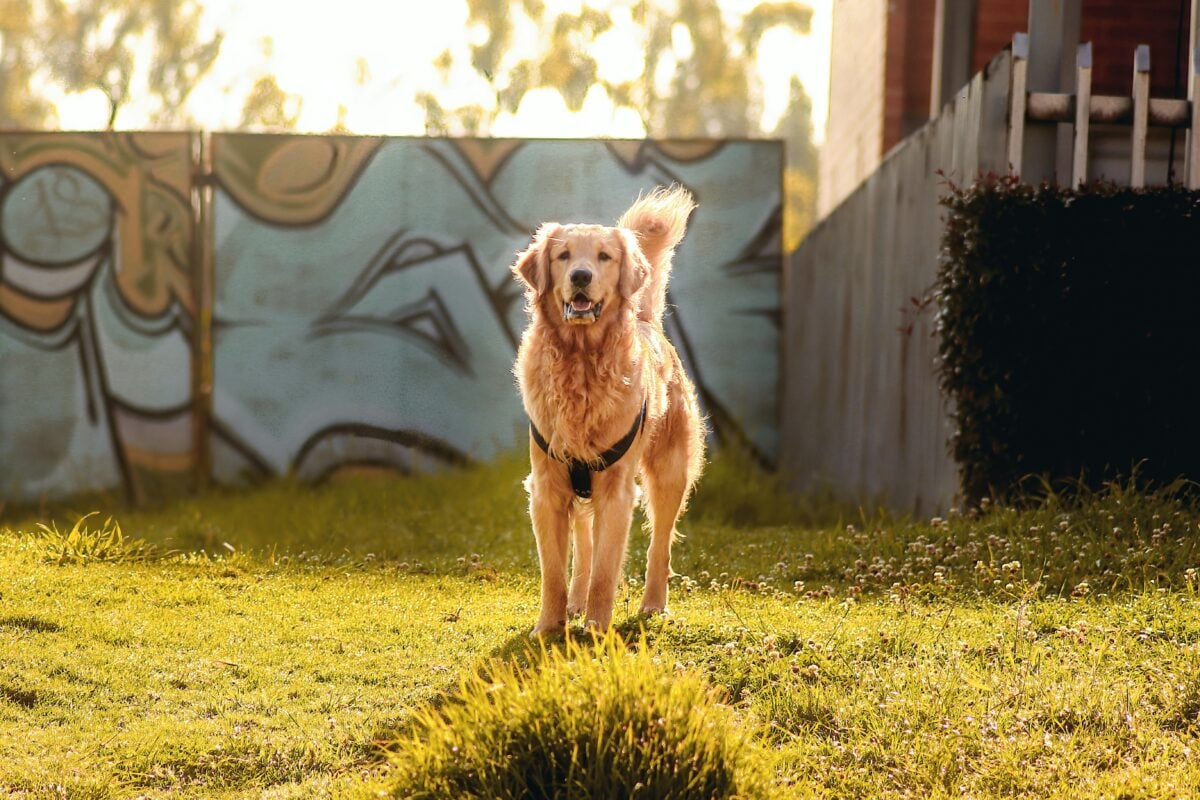
4. Add Movement
Call your dog while you’re walking away, changing direction, or ducking behind an object. This keeps them engaged and makes recall more dynamic, not just a chore.
5. Use a Long Line for Freedom + Safety
A 20–30-foot leash gives your dog room to roam but lets you reinforce recall if they freeze or bolt. It’s the best tool for bridging the gap between indoor perfection and off-leash freedom.
Outdoor recall is about layers: more noise, more smells, more temptation. The secret is adding just enough challenge to keep it fun, not frustrating.
Want to Level Up Your Training? Once your dog’s recall is coming along, take it further with leash control and off-leash freedom. Check out our guides on on-leash training and off-leash training for next-level results.
Recall Killers: 5 Mistakes That Sabotage Training
Even the best training plan can crash if you hit one of these common recall mistakes. Along with our experience and the San Francisco Society for the Prevention of Cruelty to Animals (SFSPCA) tips, these are the behaviors that quietly undo your hard work, often without you realizing it.
1. Calling in Anger
If your tone says “You’re in trouble,” your dog won’t want to come back, ever. Always sound like you’re inviting them to a party, not a punishment.
What’s The Best Dog Recall Training Method?
The goal of reliable recall training is to get your dog to associate coming to you with a positive, exciting, and rewarding experience. Using positive reinforcement training dramatically increases the likelihood that your pup will come to you every time you call (or, realistically, almost every time).
Giving your pup treats (or some other reward) and plenty of praise and physical affection will set you up for success. Never use a harsh voice, negative body language, or aversive training techniques, such as a shock collar for dog recall training.
2. Repeating the Cue Over and Over
“Come. Come! COME!!” is not a command; it’s background noise. Say it once, and then either help them succeed or reset the moment. Repetition teaches them they can ignore you the first five times.
3. Ending Fun Every Time They Come
If “Come” always means the leash goes on, the dog park ends, or playtime stops, your dog will learn to dodge you when it matters. Mix it up. Sometimes recall = freedom continues.
4. Only Practicing Indoors
A dog who’s perfect in your living room might freeze or bolt the second you hit the park. Practice with increasing levels of distraction, not just in cozy control zones.
5. Using Lame Rewards
Dry biscuits won’t cut it when there’s a rabbit in the bush. Use rewards that compete with the environment, such as cheese, chicken, toys, praise, whatever your dog truly wants.
Quick Takeaway: Avoid these traps, and your recall training will move from “sometimes” to “solid.”
Treats, Toys, or Praise? 5 Tips to Reward Without Spoiling Recall
A lot of dog owners worry: “If I always use treats, won’t my dog only come when there’s food?” The short answer: only if you train that way. Here’s how to keep recall strong, with or without snacks.
1. Start with High-Value Rewards
At first, yes, you want to use something amazing. Think chicken, liver, cheese, a squeaky toy, or wild praise. The goal is to make coming to you feel like the best decision your dog could make.
Our Personal Experience With High-Value Treats For Training
I started making my own freeze-dried liver treats after realizing store-bought options weren’t cutting it. I sliced up beef liver, baked it low and slow in the oven, then let it dry completely, and it was game over.
These treats grab my dog’s attention every single time. No matter the distraction, the second I pull one out, she’s locked in like a missile. It’s hands-down the best recall training tool I’ve ever used.
– Emma Braby, Dog Mom and Writer for Canine Journal

2. Don’t Show the Reward First
Avoid waving a treat before you call your dog. That’s a bribe. You want them to learn: “I come → then I get something awesome,” not the other way around.
3. Mix It Up
Once your dog is reliably coming, start to vary the reward. Sometimes it’s a treat. Sometimes a toy. Sometimes, just a happy voice and a head scratch. This keeps them guessing and responding.
4. Use a “Jackpot” Occasionally
Every once in a while, give your dog an unexpectedly massive reward – five treats instead of one, or a surprise game. This keeps recall exciting and unpredictable (in a good way).
5. Fade Slowly, Not Abruptly
Don’t just stop rewarding one day and expect the behavior to stick. Gradually reduce the frequency, and keep surprising them with something good here and there.
The Bottom Line: The truth is, your dog doesn’t need constant treats forever; they just need to believe recall is always worth it.
Emergency Recall: One Word That Could Save Their Life
Most dogs have decent recall in low-stakes situations, but what about when they’re sprinting toward a road, or a porcupine, or a scared kid on a scooter? That’s when you need an emergency recall.
This is a separate word from your regular “Come” cue. One that means: drop everything and run to you, no matter what. Follow these four potentially life-saving steps:
1. Choose a Special Cue
Pick a word or sound your dog has never heard in training. It could be “Now,” “Bingo,” “Tofu,” or even a whistle. The key is that it’s unique, consistent, and never overused.
2. Pair It With an Epic Reward
For the first week, say the word once per day, and follow it with an over-the-top jackpot. Chicken, cheese, a squeaky toy party, whatever your dog goes wild for. This isn’t just a good treat. It’s “best thing ever” level.
3. Never Use It Casually
This cue is for emergencies only. Don’t use it when you’re late for work or want to leave the dog park. Keep it sacred. That’s how you maintain its power.
4. Practice Occasionally, Keep It Fresh
Once your dog knows it, test it occasionally in safe but high-distraction spots. Reward big every time. If they hesitate, go back to daily rewards for a few days and rebuild trust.
Verdict: This one cue can be the difference between a close call and a tragedy. It only takes a week to build, and it can save your dog’s life.
Distraction Training: Will Your Dog Come When It Counts?
Most dogs will come when called, that is, until the squirrels, smells, and soccer balls show up. That’s why recall needs to be tested and strengthened in the same environments that usually break it.
This is called proofing. And it’s how you take your training from “kind of works in the backyard” to “rock-solid anywhere.”
Start Small, Then Stack the Chaos
Begin with mild distractions: a toy nearby, someone walking past, another dog in the distance. Call your dog and reward heavily if they respond without hesitation. If they don’t, move closer or reduce the distraction.
Practice Around Real-Life Triggers
Think about what really pulls your dog’s attention, such as kids, birds, bikes, and food wrappers on the ground. These are your training targets. Start at a distance, then work closer over time.
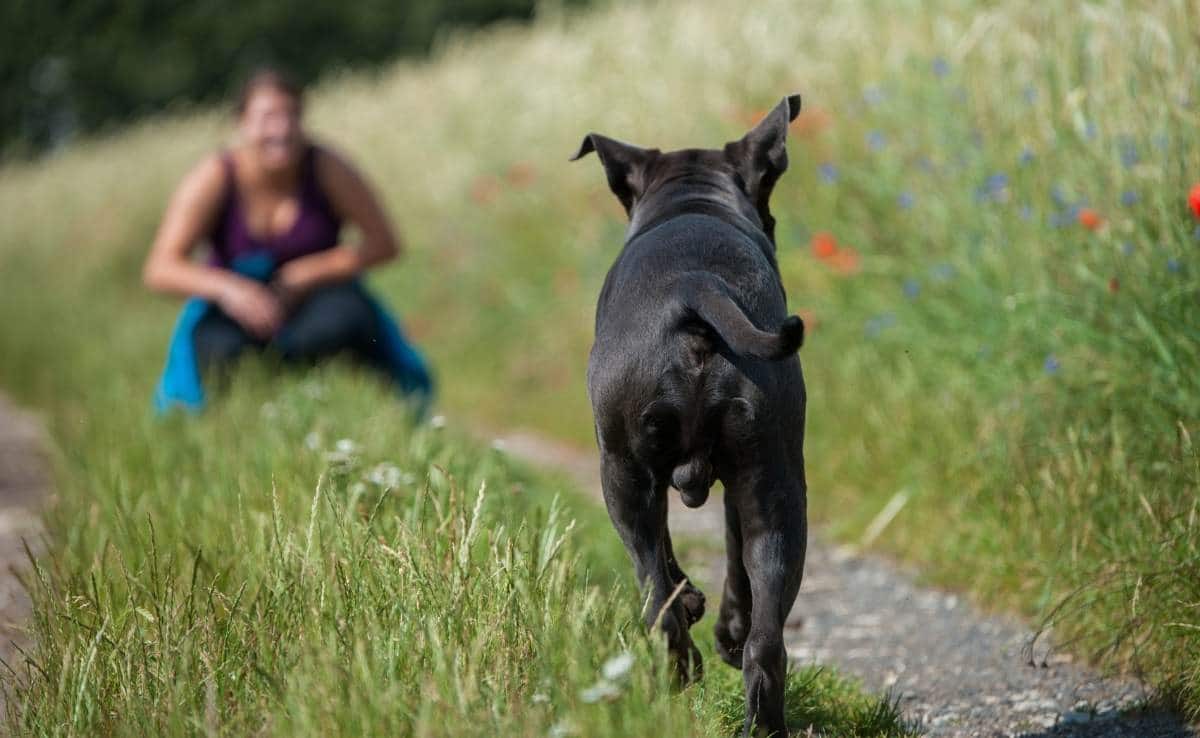
Change Locations Often
Dogs don’t generalize well. Just because they nailed it at the park doesn’t mean it will work on a hiking trail, sidewalk café, or beach. Practice recall in different places, at different times of day.
Reward Like It’s the First Time
When your dog comes back to you through real temptation, reward them big. This is the behavior you want permanently locked in.
Distraction training is where real recall lives, not in your living room, but in the middle of real life.
Watch Recall Training in Action
The brief video below from Emily Larlham, a professional dog trainer known for her popular YouTube Channel ‘Kikopup,’ shows you several different techniques for recall training using simple distractions.
You’ll notice in this video that the trainer uses a clicker instead of a verbal praise word for your dog who has satisfied the come task. Clicker training can be extremely effective when teaching your pup many different skills.
How to Teach a Puppy or Adult Dog to Come
Whether you’re starting with a curious puppy, a stubborn adult, or a rescue with a rough past, recall training is possible and incredibly important. But how you teach it may need to shift based on your dog’s age and experience.
Teaching Puppies: Keep It Fun and Fast
Puppies have short attention spans but high food drive. Use short sessions, soft praise, and tons of rewards. Turn everything into a game, run away when you call them, hide behind furniture, toss training treats as they run to you.
Always reward any movement toward you, even if it’s clumsy or slow. Confidence first, polish later.
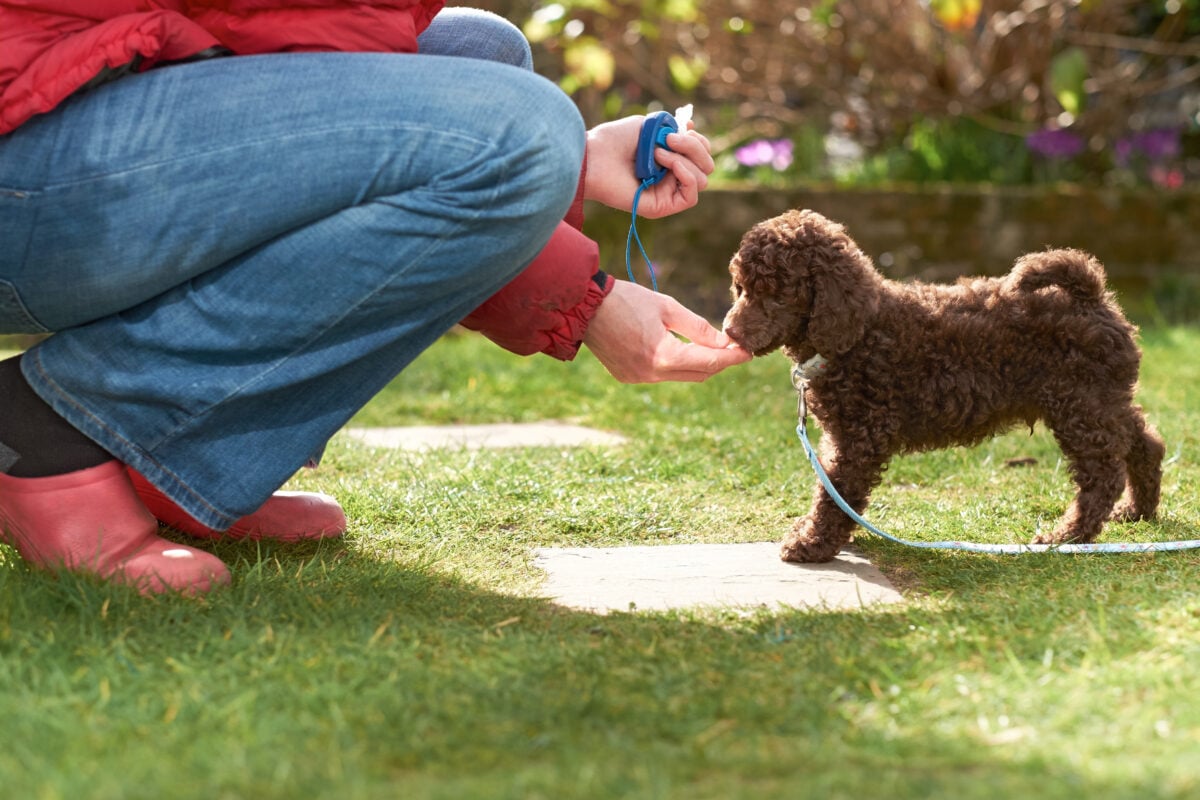
Training Adult Dogs: Reset the Word
If your adult dog has a bad history with the word “Come,” change it. Use a fresh cue like “Here” or “Close.” Rebuild trust from scratch and treat it like brand-new training, not fixing a broken command.
Focus on consistency, high-value rewards, and removing frustration from the process. Don’t assume they “should know better”, because adult dogs need patience too.
Working with Rescue Dogs: Build Trust First
Rescues may have a weaker bond or past trauma that makes recall difficult. Start by reinforcing attention and name recognition. Before “Come,” train, “Look at me.” Use calm praise, never pressure.
Expect slower progress and celebrate small wins, coming partway, checking in, and turning their head when called. These are big steps toward full recall.
Quick Takeaway: Every dog can learn recall. The key is knowing where they’re starting from and meeting them there.
Why It Works: The Science Behind Recall Training
Dogs aren’t ignoring you to be stubborn; they’re just responding to reinforcement patterns. That’s where the science comes in.
It’s All About Consequences
Dogs learn through operant conditioning, meaning they repeat behaviors that lead to good outcomes and avoid those that don’t. When your dog hears “Come,” and something amazing happens right after, their brain connects the two.
Timing Is Everything
The reward needs to happen immediately after the behavior, not ten seconds later. That’s how the dog’s brain links action to outcome. If you delay the reward, the connection fades or forms around the wrong behavior.
Rewards Create Motivation
Coming when called takes effort, especially around distractions. Positive reinforcement creates motivation: your dog wants to come back because history tells them something great happens when they do.
Repetition Builds Habits
The more often you pair “Come” with a great result, the more automatic the behavior becomes. Over time, your dog starts responding without thinking. It becomes a habit, not a decision.
Mistakes Still Teach (So Be Careful)
If “Come” sometimes means punishment, the fun ends, or they get ignored, your dog may start avoiding it. That’s why consistency matters: every response should lead to something good, especially early in training.
The Bottom Line: Understanding the science helps you train smarter, and it’s the reason recall isn’t about dominance or force. It’s about making the right choice easy, obvious, and rewarding.
What If It Still Doesn’t Work? 5 Trainer Tips & Support
Even with great training, some dogs struggle with recall, and that doesn’t mean you’ve failed. Here’s what to try next if your dog still won’t come reliably:
1. Go Back a Level
If your dog only comes inside but ignores you outside, it means the distractions are too strong for their current skill level. Go back to a less challenging environment and rebuild the habit before leveling up again.
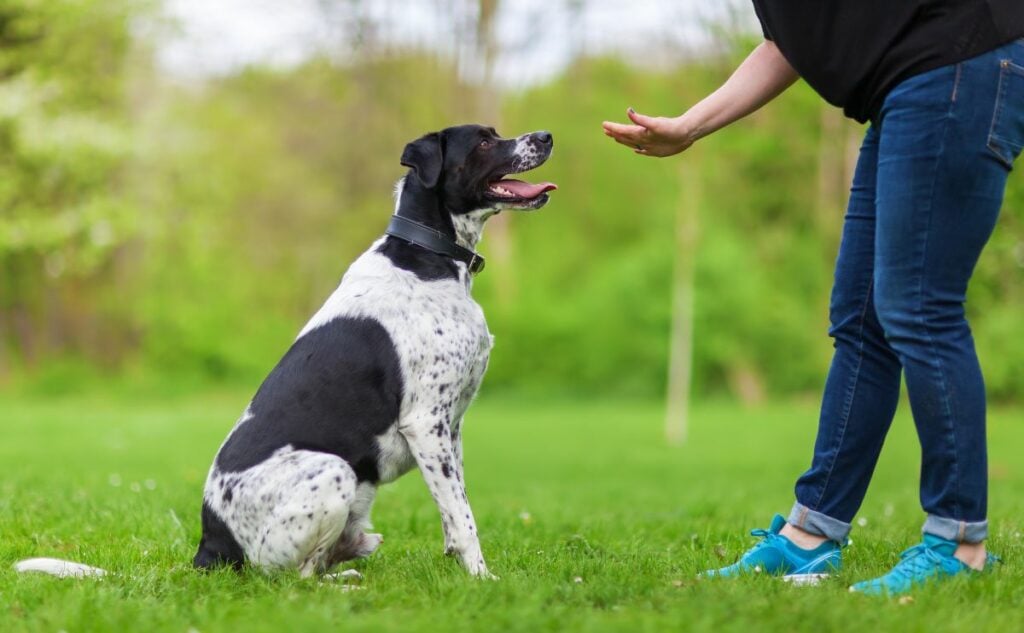
2. Change the Cue
If “Come” has lost its meaning (or has negative baggage), try a fresh cue like “Here” or “To me.” Dogs don’t care about the word, only the associations you build around it.
3. Make Your Rewards Better
If your dog doesn’t come, it might be a motivation issue, not defiance. Use higher-value rewards, change it up more often, or try using play instead of treats.
4. Try Professional Help
If you’re stuck, a certified positive reinforcement dog trainer can make a huge difference. They’ll spot small issues you might not see and help customize a plan for your dog’s behavior and personality.
5. Give It Time
Some dogs take longer than others. Rescue dogs, fearful pups, or super independent breeds may need extra patience. Keep sessions short, end on success, and celebrate progress, even if it’s slow.
The Bottom Line: Most recall failures aren’t permanent; they’re just a sign your dog needs a bit more help, structure, or motivation. Keep going. They’ll get there.
FAQs About How to Teach Your Dog to Come
Here are some of the questions we see most often about how to teach a dog to come when called. If you don’t see yours, ask us in the comments and we’ll find the answer for you.
When Should I Start Recall Training?
You can start training a puppy to come at around eight weeks old. But first, make sure your puppy knows their name. Always keep puppy training short and sweet (five-minute sessions) and have lots of patience.
What Do I Need For Recall Training?
Before you begin, you’ll need a few provisions, including training treats and a long, loose training leash. You may want to invest in a treat pouch to make your training easier.
How Long Does Dog Recall Training Take?
Dogs learn in so many ways and at such varying rates that there’s no target timeline. In general, you can expect it to take three to six months of regular and consistent training to fully build reliable recall.
How Do I Teach My Dog To Come Without Treats?
If your dog isn’t motivated by food or you’d prefer training without treats, you can substitute a treat reward with a favorite toy. Squeaky toys work well for many dogs. Just make sure you have some reward for your pup to achieve success.
What If My Dog Runs Away When I Call Them?
That’s usually a sign the dog thinks “Come” means punishment, the fun is over, or nothing exciting happens. Start fresh with a new word, rebuild the reward connection, and practice in easier environments.
Should I Use a Whistle for Recall?
A dog training whistle can be great for long distances or dogs who tend to tune out your voice. Just make sure you pair it with high-value rewards during training, just like you would with a verbal cue.
Do You Need Training Assistance?
If your recall training isn’t going as well as you hoped or you’re not confident in training on your own, you can always seek reinforcement from a professional dog trainer, like Doggy Dan.
Instead of paying a fortune for an in-person dog trainer, see our reviews of the best online dog training courses and dog training apps to find affordable training assistance if you need it. Some of these options even give you virtual access to professional dog trainers.
Got a Recall Win (or Fail)? We’d love to hear it! Share your training victories, challenges, or funniest “they totally ignored me” moments in the comments. Your story might help another dog parent out.
